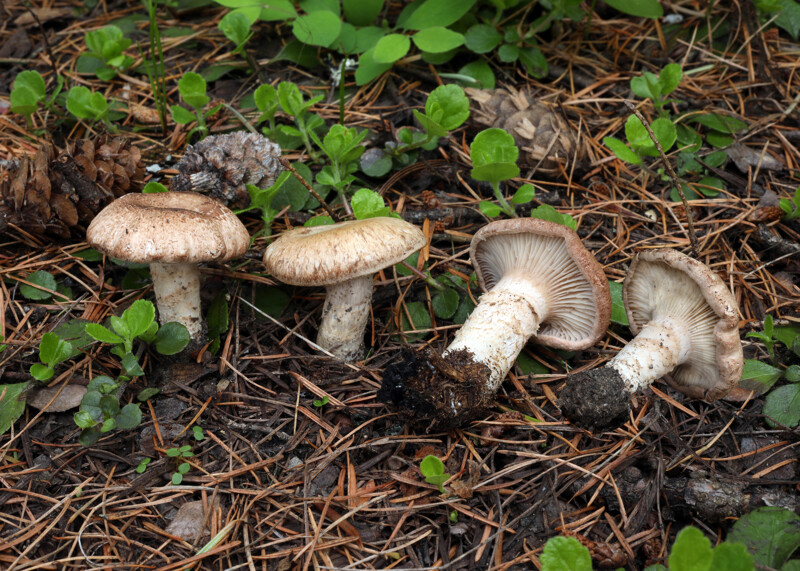Conservation Status: Not of concern
Matheny In the mid-1900s Clitocybe subvelosa and C. gomphidioides were described from western North America. They differed from other clitocybes by having a partial veil. Species of this sort were not recorded again until Drew Parker found another veiled clitocybe fruiting in spring near Metaline Falls, Washington. New analyses, including DNA data, led to a new genus, Cleistocybe, being created for this mushroom, and it was given the epithet vernalis to reflect its spring occurrence. The cap has a covering of vinaceous brown fibrils, like kidskin, over a pale pinkish gray background when fresh, and becomes more ochraceous brown in age. The surface turns greenish when a drop of 3% potassium hydroxide is applied. The gills are pale pinkish gray, close, and decurrent. The stipe is enlarged below and colored like the cap. The veil leaves a thin, pale, pinkish gray ring on the upper stipe and coarse patches of veil tissue on the lower stipe and margin of the cap. In some instances, the ring is quite faint, so careful observation of a range of specimens is required. As far as is known it occurs only in spring following snowmelt. Discovery of C. vernalis also led to renewed study of Clitocybe gomphidioides and C. subvelosa, and they were determined to represent only one species, with the earlier name C. gomphidioides having priority. This species has been found occasionally in conifer forests of Washington, Idaho, and Colorado, and fruits in September and October. Both Cleistocybe vernalis and Clitocybe gomphidioides are related to Catathelasma, but they are much smaller and do not have amyloid spores.
Sources: Trudell, Steve and Joe Ammirati. Mushrooms of the Pacific Northwest. Portland, Timber Press, Inc. 2009.
PNW Herbaria: Specimen records of Cleistocybe vernalis in the Consortium of Pacific Northwest Herbaria database
CalPhotos: Cleistocybe vernalis photos



